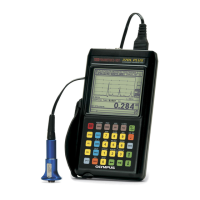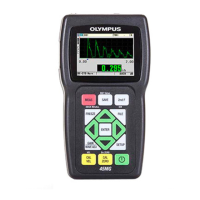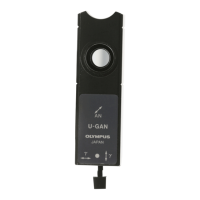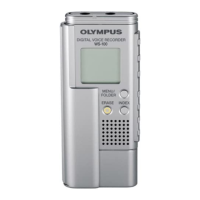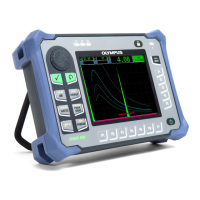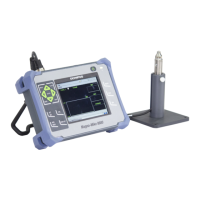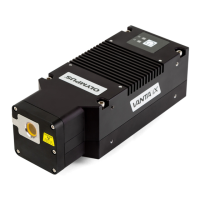DMTA-10009-01EN [U8778346], Rev. D, November 2016
Chapter 5
66
You can rename the setups listed as USER-1 through USER-35 for special applications.
d) Press [MEAS] to automatically recall the setup parameters for the chosen
setup and return to the measurement screen.
5.2 Calibration
The calibration is the process of adjusting the instrument to accurately measure on a
particular material, using a known transducer at a given temperature. Calibrating the
instrument is always necessary before inspecting a specific material. The
measurement accuracy is only as good as the calibration that you perform.
You need to perform the following three calibration types:
Transducer zero compensation ([Do ZERO])
For dual element transducer only, calibrate for the sound transit time in each of
the dual transducer delay lines. This compensation varies in each transducer unit
and with temperature. You must perform the transducer zero compensation
procedure when the unit is powered on, when the transducer is changed, and
when the transducer temperature changes significantly (see “Setting Up the
Transducer” on page 63 and “Transducer Zero Compensation” on page 70).
Material sound velocity calibration ([CAL VEL])
Perform a velocity calibration using a thick test block of the measured material
with known thickness or by manually entering a previously determined material
sound velocity. You must perform this procedure for each new measured material
(see “Calibrating the Instrument” on page 67 and “Material Sound Velocity and
the Zero Calibrations” on page 71).
Zero Calibration ([CAL ZERO])
Perform a zero calibration using a thin test block of the measured material with
known thickness. Unlike the transducer zero compensation and the material
sound velocity calibration, this procedure is not required unless you need the best
absolute accuracy (better than ± 0.10 mm or ± 0.004 in.). You only need to do it
once for each new transducer and material combination. You do not have to
repeat the zero calibration when the transducer temperature changes; Transducer
zero compensation is responsible for that task (see “Calibrating the Instrument”
on page 67 and “Material Sound Velocity and the Zero Calibrations” on page 71).

